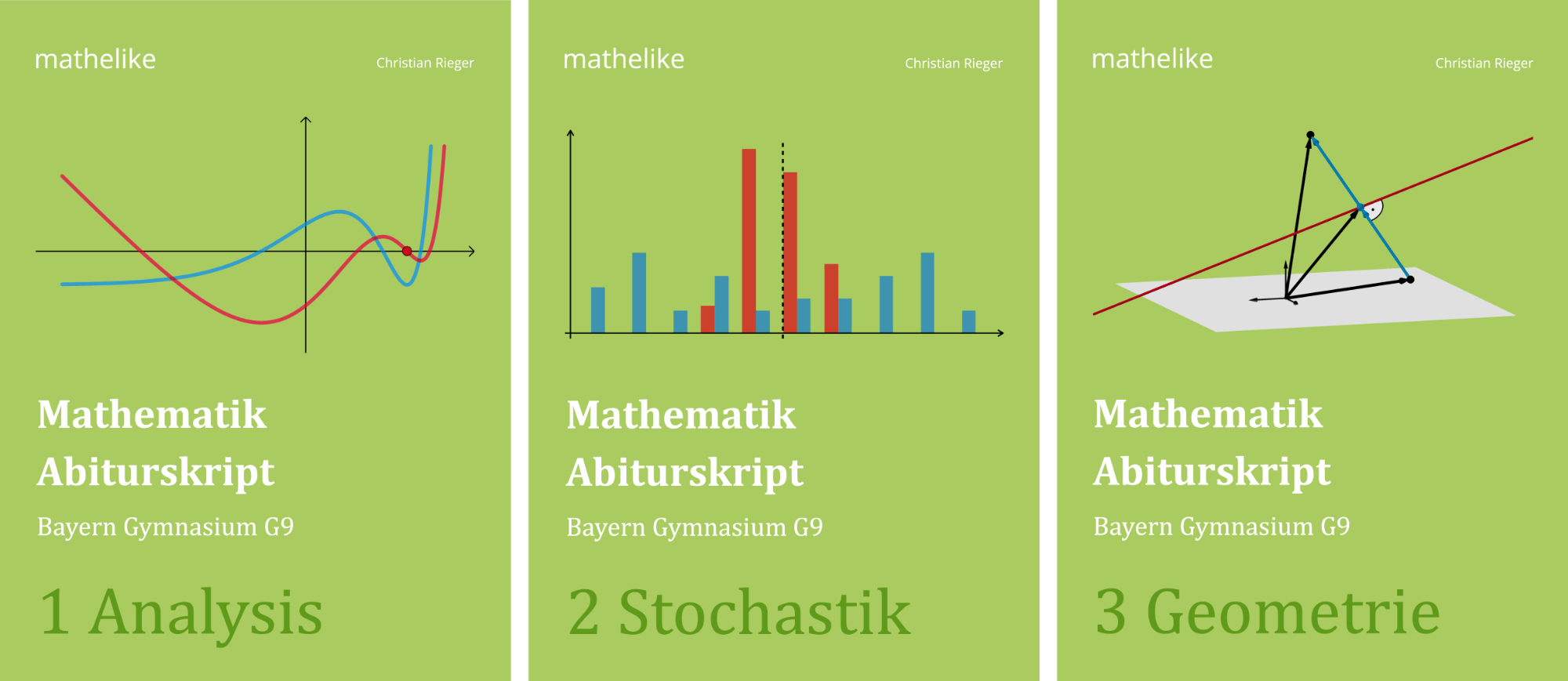Geben Sie eine Gleichung einer Geraden \(j\) an, die parallel zu \(H\) durch den Punkt \(Q\) verläuft.
(2 BE)
Lösung zu Teilaufgabe 1b
\[H\,\colon\; 2x_1 + x_2 - x_3 = 4\,; \qquad Q\,(-3|0|2)\]
Der Richtungsvektor \(\overrightarrow{v}_j\) einer zur Ebene \(H\) parallelen Geraden \(j\) mit der Gleichung
\(j\,\colon\; \overrightarrow{X} = \overrightarrow{Q} + \lambda \cdot \overrightarrow{v}_j\,;\enspace \lambda \in \mathbb R\)
muss senkrecht zum Normalenvektor \(\overrightarrow{n}_H\) der Ebene \(H\) sein.
\[\overrightarrow{v}_j \perp \overrightarrow{n}_H \quad \Longrightarrow \quad j \parallel H\]
Anwendung des Skalarprodukts:
Orthogonale (zueinander senkrechte) Vektoren (vgl. Merkhilfe)
\[\overrightarrow{a} \perp \overrightarrow{b} \; \Leftrightarrow \; \overrightarrow{a} \circ \overrightarrow{b} \quad (\overrightarrow{a} \neq \overrightarrow{0},\; \overrightarrow{b} \neq \overrightarrow{0})\]
\[\overrightarrow{v}_j \perp \overrightarrow{n}_H \quad \Longleftrightarrow \quad\overrightarrow{v}_j \circ \overrightarrow{n}_H = 0\]
\[H\,\colon\; 2x_1 + x_2 - x_3 = 4 \quad \Longrightarrow \quad \overrightarrow{n}_H = \begin{pmatrix} 2 \\ 1 \\ -1 \end{pmatrix}\]
Richtungsvektor \(\overrightarrow{v}_j\) der Geraden \(j\) finden:
Skalarprodukt
Unter dem Skalarprodukt \(\overrightarrow{a} \circ \overrightarrow{b}\) zweier Vektoren \(\overrightarrow{a}\) und \(\overrightarrow{b}\) versteht man das Produkt aus den Beträgen der beiden Vektoren und dem Kosinus des von den Vektoren eingeschlossenen Winkels \(\varphi\).
\[\overrightarrow{a} \circ \overrightarrow{b} = \vert \overrightarrow{a} \vert \cdot \vert \overrightarrow{b} \vert \cdot \cos{\varphi} \quad (0^{\circ} \leq \varphi \leq 180^{\circ})\]
Berechnung eines Skalarprodukts im \(\boldsymbol{\mathbb R^{3}}\) (vgl. Merkhilfe)
\[\overrightarrow{a} \circ \overrightarrow{b} = \begin{pmatrix} a_{1} \\ a_{2} \\ a_{3} \end{pmatrix} \circ \begin{pmatrix} b_{1} \\ b_{2} \\ b_{3} \end{pmatrix} = a_{1}b_{1} + a_{2}b_{2} + a_{3}b_{3}\]
Beispielsweise gilt:
\[\displaystyle \begin{pmatrix} 2 \\ 1 \\ -1 \end{pmatrix} \circ \begin{pmatrix} 1 \\ 0 \\ 2 \end{pmatrix} = 2 \cdot 1 + 1 \cdot 0 + (-1) \cdot 2 = 0\]
oder
\[\displaystyle \begin{pmatrix} 2 \\ 1 \\ -1 \end{pmatrix} \circ \begin{pmatrix} 1 \\ -2 \\ 0 \end{pmatrix} = 2 \cdot 1 + 1 \cdot (-2) + (-1) \cdot 0 = 0\]
Damit lautet die Gleichung einer zur Ebene \(H\) parallelen Geraden \(j\) beispielsweise:
\[j\,\colon\; \overrightarrow{X} = \begin{pmatrix} -3 \\ 0 \\ -2 \end{pmatrix} + \lambda \cdot \begin{pmatrix} 1 \\ 0 \\ 2 \end{pmatrix}\,; \enspace \lambda \in \mathbb R\]
oder
\[j\,\colon\; \overrightarrow{X} = \begin{pmatrix} -3 \\ 0 \\ -2 \end{pmatrix} + \lambda \cdot \begin{pmatrix} 1 \\ -2 \\ 0 \end{pmatrix}\,; \enspace \lambda \in \mathbb R\]


